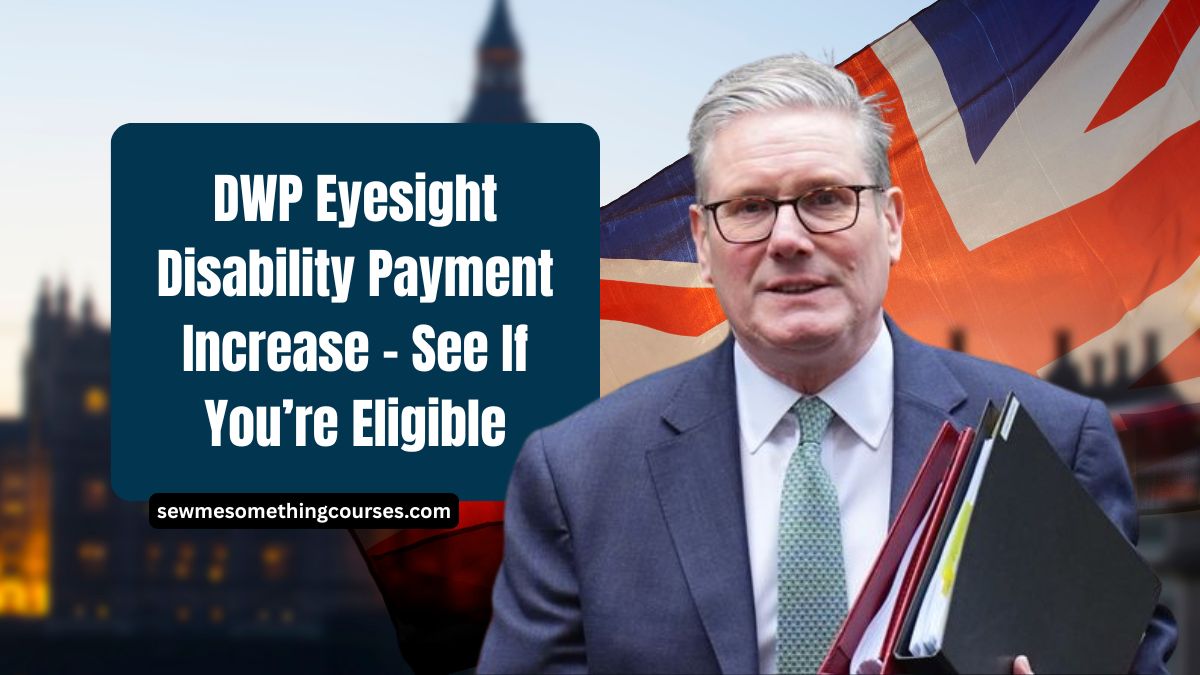In Great Britain, approximately two million people are affected by vision issues or deteriorating eye conditions. Notably, three out of four individuals with visual impairments are aged 65 and older, while an estimated 8,000 working-age individuals are either blind or partially sighted.
For many adults who experience vision loss later in life, the transition can be overwhelming, as it may limit their ability to engage in activities like driving, sports, reading, and cooking.
However, the Attendance Allowance, a tax-free benefit provided by the Department for Work and Pensions (DWP), can offer valuable financial assistance to eligible individuals.
This benefit currently supports over 1.6 million people across the UK, helping them cope with the additional challenges posed by vision loss and other disabilities.
This article provides all the essential details about Attendance Allowance, including how it works, who can claim, and the amount you may receive.
How Attendance Allowance Helps People with Vision Loss
DWP Statistics on Attendance Allowance Claims
As of August 2024, a total of 50,993 individuals received weekly payments for visual disorders or diseases under the Attendance Allowance program. These payments were either £73.90 or £110.40 per week. The breakdown of claimants is as follows:
- Scotland: 4,654 claimants
- England: 42,934 claimants
- Wales: 4,654 claimants
- Living Abroad: 149 claimants
- Total: 50,993 claimants
Common Eye Conditions Affecting Older Adults
There are over 45 eye conditions affecting adults across the UK. Some of the most prevalent conditions that may qualify individuals for Attendance Allowance include:
- Glaucoma
- Retinitis Pigmentosa
- Diseases of the retina and optic nerve (unspecified types)
- Diabetic Retinopathy (vision loss caused by diabetes)
- Cataracts
- Myopia (short-sightedness)
- Macular Degeneration (wet and dry, commonly age-related)
If you or someone you know under State Pension age has a sight condition, you may want to explore PIP (Personal Independence Payment) or ADP (Adult Disability Payment) options. If over State Pension age, Attendance Allowance may be the most suitable benefit to apply for.
What is Attendance Allowance?
Attendance Allowance is designed to help those with a physical or mental disability or illness that makes it difficult for them to care for themselves. This benefit is tax-free and can be used for additional costs that arise from a disability.
However, it is important to note that Attendance Allowance does not cover mobility needs, and it is available exclusively to individuals who have reached State Pension age.
A key feature of this benefit is that you do not need to have someone caring for you to qualify for Attendance Allowance.
Who Can Apply for Attendance Allowance?
You may be eligible for Attendance Allowance if you need support or supervision either during the day or at night, even if you do not currently receive this help. Eligible conditions might include:
- Personal care assistance: Help with activities such as getting dressed, eating, drinking, bathing, or using the toilet
- Safety assistance: Help to stay safe, particularly if you have difficulty moving or managing tasks independently
- Pain or physical help: If personal tasks take too long or are painful, or if you need physical support like a chair to lean on
- Mental health conditions: If you have a mental health issue that impacts your daily functioning
- Learning difficulties: If you have difficulties in daily living due to a learning condition
- Sensory conditions: If you are deaf or blind, requiring extra support
How Much Could You Receive from Attendance Allowance?
The amount of Attendance Allowance you may be eligible for depends on the level of care you need. Currently, you can receive one of two amounts:
- £73.90 per week for lower care needs
- £110.40 per week for higher care needs
These payments are made every four weeks, with amounts totaling:
- £296.60 for the lower rate
- £441.60 for the higher rate
This money can be used for various needs, including:
- Paying for taxis
- Cleaning or gardening services
- Bill payments
- Hiring help for various personal tasks
The benefit is intended to help you maintain independence and stay in your own home for as long as possible.
Attendance Allowance offers crucial financial support to individuals with vision impairments or other disabilities, enabling them to manage the additional challenges posed by their conditions.
By providing weekly payments, it helps recipients maintain a level of independence and manage the costs of extra care.
If you are over State Pension age and require support due to vision loss or another qualifying condition, it’s worth considering applying for this valuable benefit.
FAQs
Can I apply for Attendance Allowance if I do not have someone caring for me?
Yes, you do not need to have someone caring for you to qualify for Attendance Allowance. The benefit is available to individuals who need assistance with personal care or supervision.
How often is Attendance Allowance paid?
Attendance Allowance is paid every four weeks. The amount you receive depends on the level of care you need.
Can I use the Attendance Allowance money for anything?
Yes, you are free to use the Attendance Allowance payments for whatever you need, such as paying for taxis, help with household chores, or bill payments.

